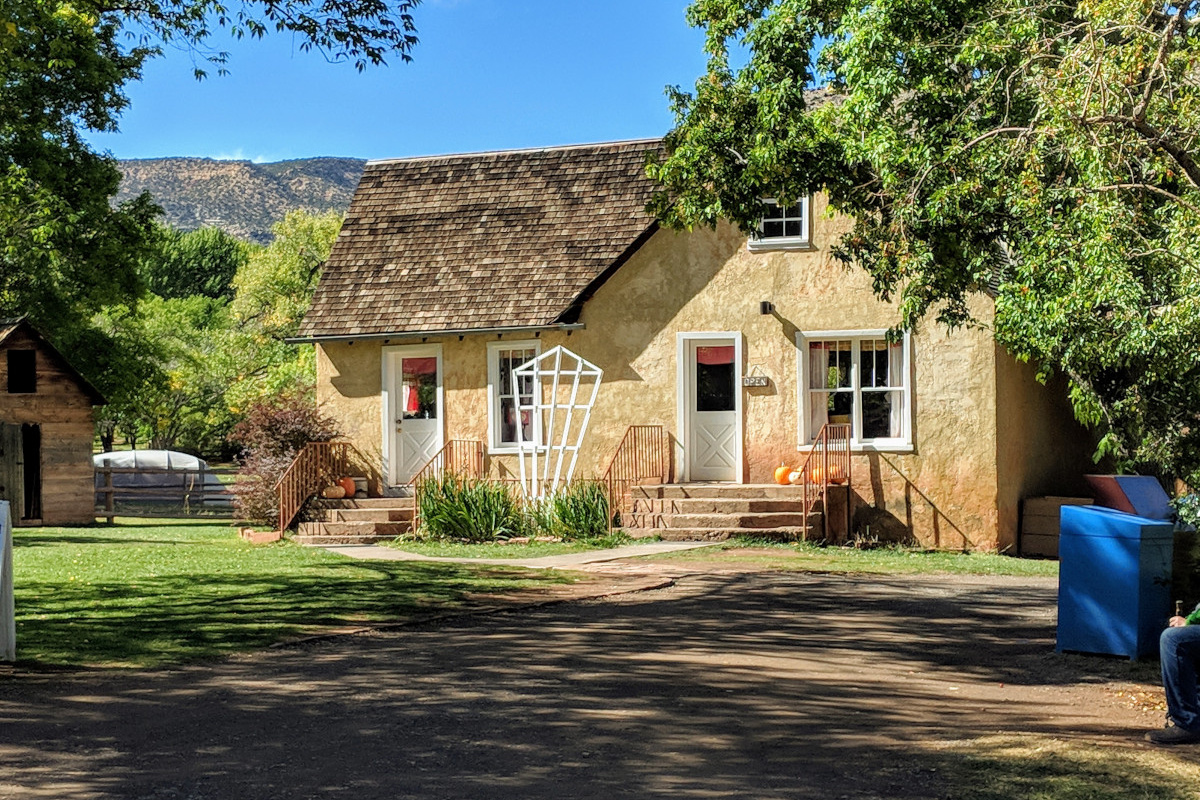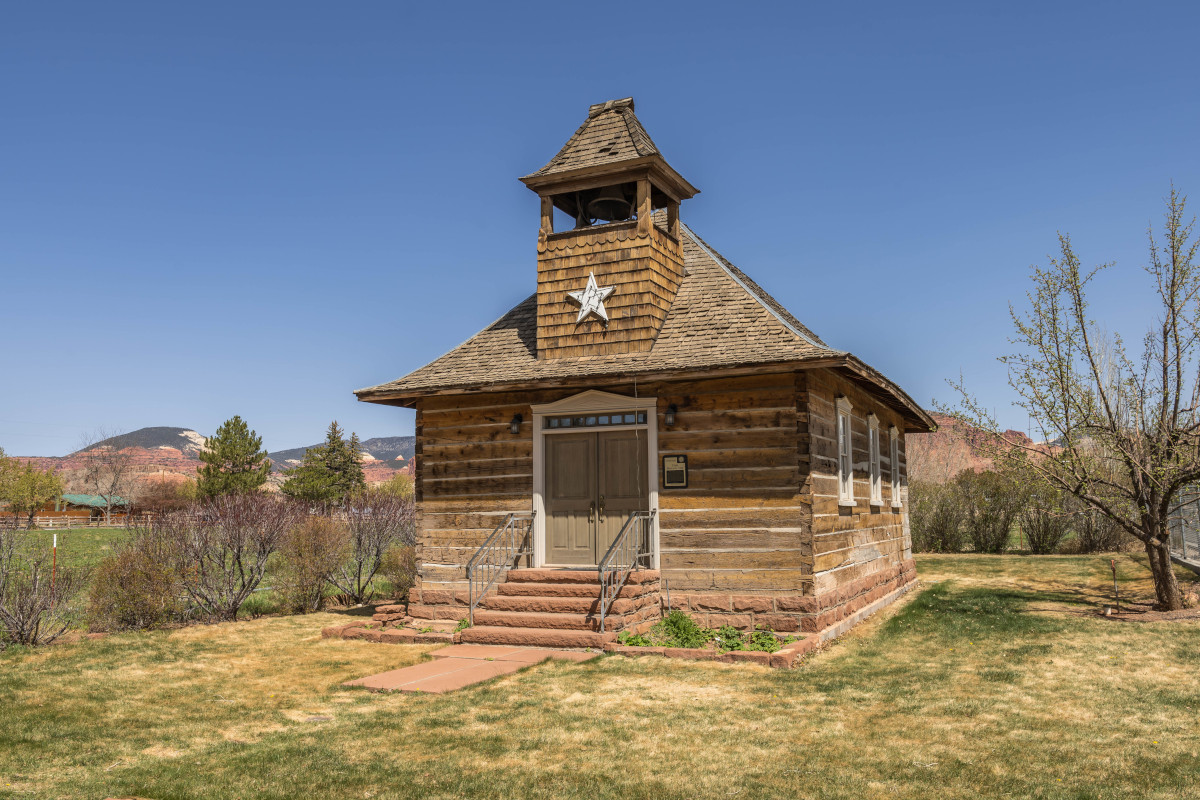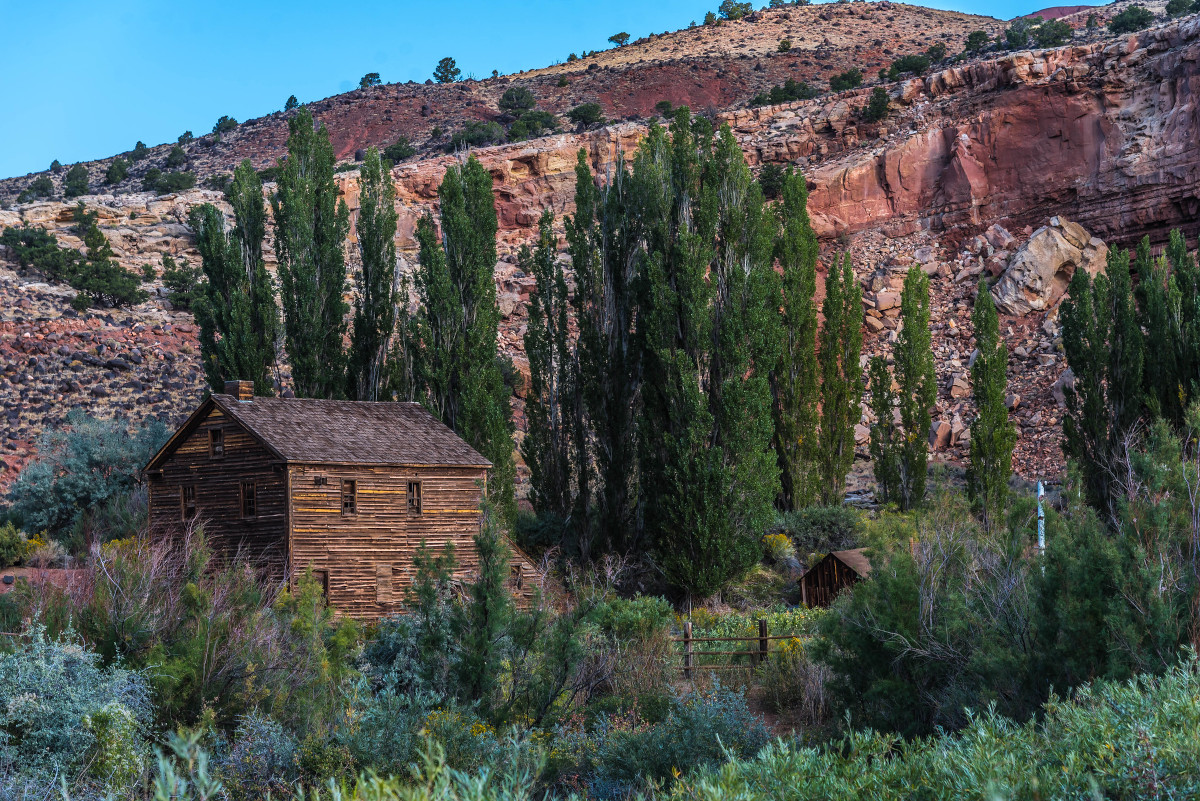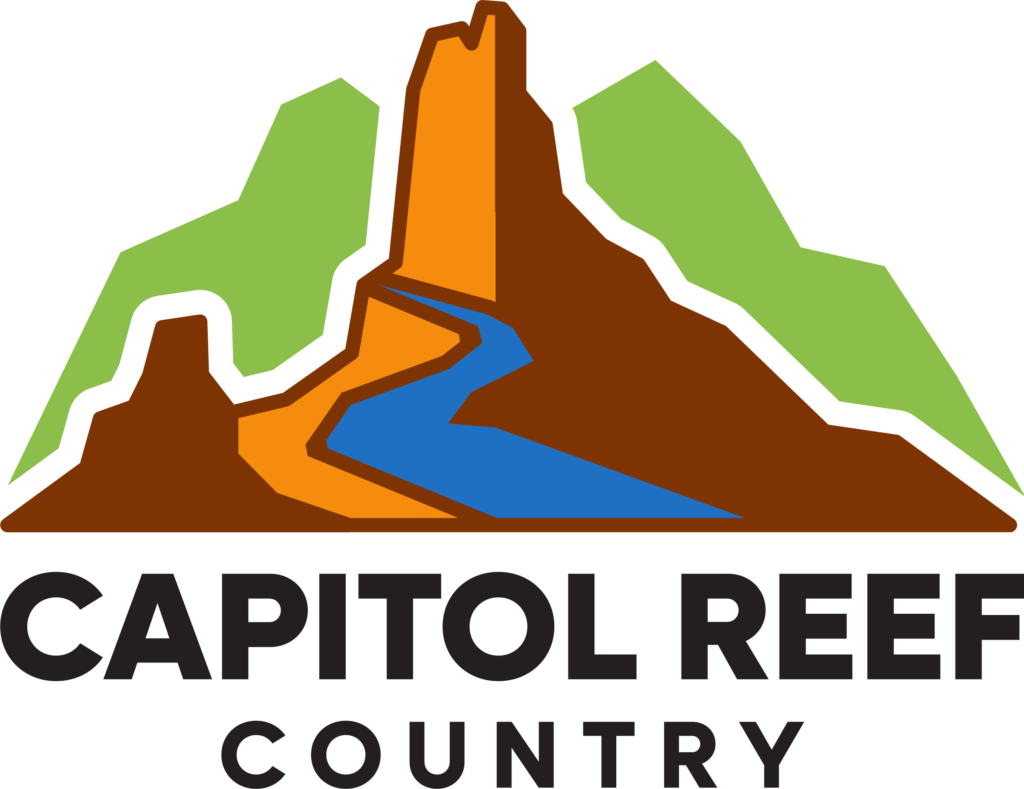CAPITOL REEF HISTORY
Capitol Reef National Park is a land rich in history. Many people have called this area home over the years, and many important sites are still available for visitors to come see and experience a look into what life was like in Capitol Reef Country years, decades, and even centuries ago. Guests will appreciate the area’s natural beauty even more if they know the stories and events that helped shape this unique national park.
EARLY NATIVE INHABITANTS
Long before tourists were coming to enjoy the beauty and recreation available in the area, Capitol Reef and the rest of Wayne County was home to ancient tribes of people who established communities amid the protective canyon walls and winding rivers.
The Fremont People
The first known inhabitants of Capitol Reef Country were the Fremont People, who were related to the Ancestral Puebloans.They hunted and farmed this area of Utah around 700 AD. The Fremont centered their lives around the streams and lakes where fertile soil and resources could be found in abundance. They remained here until about 1250. Evidence of their time in Capitol Reef can be seen in the artistic depictions they left on large rocks and canyon walls throughout the park. See how many of these remarkable pieces of Capitol Reef history you can spot as you explore!
The Paiute Tribe
Around the years 1600 to 1800, the Paiute Tribe called Capitol Reef Country home. They may have remained longer, but were pressured to leave by the arrival of early pioneers, who began to set up establishments and develop the land, which had previously been uncharted.
FRONTIER SETTLERS
In 1872, this area which would become Wayne County, Utah began to be officially documented by explorers and the settlers who had begun a community there. One of those local settlers was a man named Ephraim Portman Pectol. Ephraim greatly appreciated the natural beauty of the region and wanted to help preserve and protect it.
In the 1920s, Ephraim and his brother-in-law, Joseph S. Hickman, organized the “Wayne Wonderland Club”. The club was dedicated to the preservation as well as the promotion of Wayne County’s unique landscape and appeal. Hickman eventually was elected to the Utah state legislature and went on to designate 16 acres of land around the community of Fruita as a state park in 1926. Then, in 1937, President Franklin D. Roosevelt expanded the park’s acreage and declared it a national monument. Capitol Reef finally became a national park in 1971.
HISTORIC SITES IN CAPITOL REEF
Not only does the landscape offer visitors a step into the iconic America west, but many historical sites also remain as a peek into the history of Capitol Reef.
These are some of the main historical sites that visitors enjoy as they imagine what life must have been like amid the canyon walls for the early explorers and pioneer settlers of the “Old West”.
In the 1920s, Ephraim and his brother-in-law, Joseph S. Hickman, organized the “Wayne Wonderland Club”. The club was dedicated to the preservation as well as the promotion of Wayne County’s unique landscape and appeal. Hickman eventually was elected to the Utah state legislature and went on to designate 16 acres of land around the community of Fruita as a state park in 1926. Then, in 1937, President Franklin D. Roosevelt expanded the park’s acreage and declared it a national monument. Capitol Reef finally became a national park in 1971.
 Historic Gifford House
Historic Gifford House
As part of the park’s historic district of Fruita, the Gifford House depicts what a typical rural Utah farm home was like in the early 1900’s. The house was originally constructed in 1908 by Calvin Pendleton and his family. They lived there for 8 years before Jorgen Jorgenson’s family moved in. Jorgenson sold the home to his son-in-law, Dewey Gifford, in 1928. The Giffords lived in the house for 41 years as its last private residents.
The land on which the Historic Gifford House sits has been placed on the National Register of Historic Places. It’s one of the best places to visit to see what a home was truly like during that period. New home builders of today would pay big money for a chance to plant a home with a front porch view and a backyard like the Gifford Homestead!
Since 1996, the Gifford House has operated as a museum and cultural demonstration site for visitors. The homestead includes a seven room house, barn, smokehouse, garden, pasture, and rock walls. There are also items available for sale at the house, including bottled fruits, vegetables, pie and ice cream made daily. Your purchase helps support Capitol Reef National Park.
 Torrey Log School and Church
Torrey Log School and Church
In the small community of Torrey, members of the Church of Jesus Christ of Latter-Day Saints opened a newly constructed church house in 1898 where they could hold their meetings. This one-room log structure measured 21 feet by 37 feet and built by the church members with local lumber and donated materials. On the night the final doors and windows were installed to complete the church, the people of Torrey and the nearby ranches gathered together for a celebration which included violin and accordion music.
According to local legend, “When dances were held in the log meeting house, it was necessary for the men to take turns in dancing. So when a man bought a ticket, he was given a number, and the floor manager would call, “Numbers one to ten fill the floor for a waltz,” then later, “Ten to twenty fill the floor.” Proceeds from these public dances went toward the purchase of a bell for the church tower.
The Torrey church building was heated by a pot-bellied stove which apparently remained in use until a remodeling in 1947!
While still operating as a church building, this little log-building also doubled as a school house starting about a month after its construction. Prior to state aid, the school teachers were hired and paid by the students’ parents. Students attended class for five months each year. When state revenue came to the school in 1910, the school year was extended to seven months. Early makeshift desks and chairs were slowly replaced by individual desks with ink wells. Slates were replaced by blackboards and paper.
As the town of Torrey grew, the building served many different purposes and hosted a number of events, including meetings for the Relief Society (a women’s organization within the church), public voting, and meetings for the local Daughters of Utah Pioneers.
Today, the Torrey Log School and Church sits at a different site than where it was originally built and has been renovated. It is listed as a historical building on the National Register. This building serves as a unique piece of history since very few unaltered examples of early log construction are left in Utah. Occasional meetings still take place inside and the building is visible from the road, now located at 89 East Main Street Torrey, Utah.
Morell Cabin
The Morrell Cabin was originally built by Paul Christensen in the 1920’s on Thousand Lake Mountain. It was used as a summer logging camp. The cabin was moved to its present location in Cathedral Valley by Lesley Morrell sometime in the 1930’s.
Locally known as Les’s cabin, it was kept furnished and stocked as a cowboy line camp, open to all who needed a bunk or a meal. This tradition ended in 1970 when the National Park Service purchased the property.
With a rugged backdrop of painted badlands and the complete isolation of Cathedral Valley, visiting Morrell Cabin gives one the feeling of taking a step back in time. Without the presence of modern developments or the sounds of a city, the cabin feels about the same way it did for the cowboys of the early 1900s.
Visitors to the cabin have left mementos, artifacts and poetry, a shrine to loneliness and solitude or maybe out of respect for a bygone era. Maybe for the dusty cowboy or weary traveler who needed shelter and a plate of beans before continuing on his way. The ghosts of days past reside here.
The Morrell Cabin is located two miles north of the Hartnet Junction on the Cathedral Valley Loop. This section of Capitol Reef National Park is rarely visited. It’s a chance to really experience the park’s history in its purest form. But the backcountry traveler must be prepared for any situation he or she may encounter.

Nielson Grist Mill
The Nielson Grist Mill is located on Highway 24 between Teasdale and Bicknell. The original mill was built in 1883 of logs and burrstones, by Hans Peter Nielson, a Danish miller who came to Utah in 1863. Between 1883 and 1890 the mill burned down and was rebuilt in 1890. In 1910 the mill was remodeled and very modern equipment was installed.
There are 16 grain elevators, and five reels for flour milling. The mill also includes a dust collector, a water-powered turbine, wooden pulleys that were made from wood in the area, a Howe wheat-buying scale, and a scale for packing flour. It was a fully functioning grist mill up until around 1935.
Grist mills used to be common in Utah communities with populations of more than 500 people. They were the places families went to have their wheat ground into flour. The Nielson mill is the only mill in Utah that still has its original water-powered workings. Water for the mill was diverted by a flume from the Fremont River.
Now standing as a relic of Capitol Reef history, the old Nielson Grist Mill has become a popular tour destination. The Wayne County Daughters of the Utah Pioneers have constructed a monument with a turn-out east of the mill.
Wolverton Mill
Shortly after the turn of the century, Edwin Thatcher Wolverton, a mining engineer from Maine, came to Utah to look for gold in the Henry Mountains. For 12 long years he searched for Spanish mines and even filed several claims. Wolverton built the mill to process the ore he anticipated mining. The mill did in fact process some ore, but not much. The Wolverton Mill is unique in the way it combined the functions of wood cutting and ore crushing. Wolverton finally abandoned the mill in 1929.
In one of their largest historic preservation projects ever organized, the Bureau of Land Management relocated and reconstructed the mill. The restored mill can be found in the southwest corner of Hanksville, behind the BLM office.
Visitors to the mill can take a short self-guided tour.
For more information, please contact:
BLM Henry Mountain Field Station
P.O. Box 99 Hanksville, Utah 84734
Telephone: (435) 542-3461
FAMOUS TRAILS
The outlaw trail was a route that included tough, difficult stretches of terrain for its early travelers. Some of the famous cowboys of history made their way through Capitol Reef Country or even used it as a hideout. The outlaws had a series of strongholds along the way that offered a chance to rest up after “The Big Job.”
Perhaps the most famous part of the Outlaw Trail is an area known as Robbers Roost.
Robbers Roost is in the far north eastern corner of Wayne County. This was a frequent hangout for the likes of Butch Cassidy, Kid Curry, and many other notorious banditos of the past. Robbers Roost allowed outlaws to move through the area undetected. It was a great spot to hide and protect themselves when the law closed in. It’s easy to get lost in the winding canyons and rugged landscape if you don’t know the land well.
Walk where the Capitol Reef cowboys walked with a tour through Robbers Roost. You can start in historic Hanksville going north 18 miles on Utah 24. Turn right on Hans Flat Road, which is a maintained dirt road. After traveling 22.8 miles through the San Rafael desert, an intersection veers north (left) or East (right). Continue to the right 6.7 miles. Robbers Roost Spring Trail (central #20) is a right turn. Follow the right hand track 5.7 miles. A left hand trail dead ends at Robbers Roost Spring which is a great place for a picnic lunch.
The Cottrell Cabin or what is left of it is .2 miles North Northeast of the dead end. The Cottrell Cabin was an abandoned house that was used by passing cowboys when they were in the area until a disgruntled sheepherder eventually burned it down to get rid of the outlaws’ presence.
This trip is recommended for a vehicle with higher ground clearance. Please remember roads can become impassable during inclement weather.
VISITING CAPITOL REEF COUNTRY
Help us protect the evidence of ancient cultures long vanished in history. When you explore the back country you will find chip piles, arrowheads, petroglyphs, ruins and potsherds. Please leave these artifacts as they are. To disturb or collect them is disrespectful and against the law.
We encourage all to come experience one of the few places where the Old West has been preserved throughout history!
Capitol Reef Visitor Center Bookstore
The Capitol Reef Visitor Center offers a great selection of books, maps, postcards, and more. Purchases help support our efforts to preserve and promote the history of this secluded but exciting area of the West.


